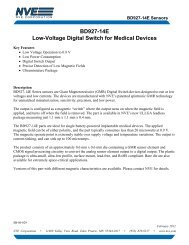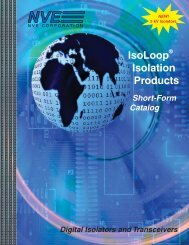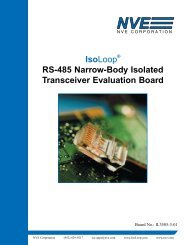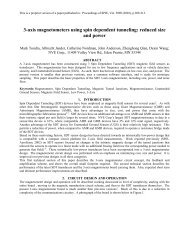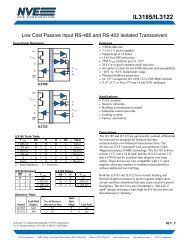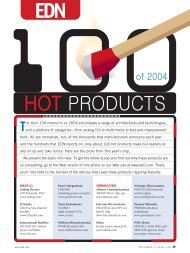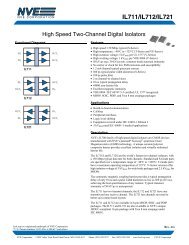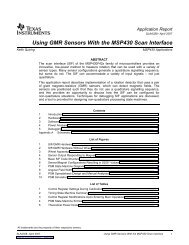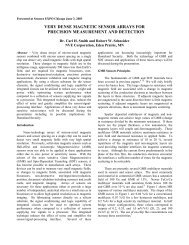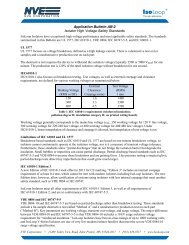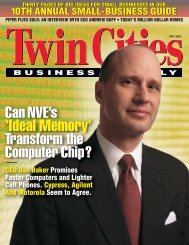Magnetoresistive Random Access Memory (MRAM) Technology (.pdf)
Magnetoresistive Random Access Memory (MRAM) Technology (.pdf)
Magnetoresistive Random Access Memory (MRAM) Technology (.pdf)
Create successful ePaper yourself
Turn your PDF publications into a flip-book with our unique Google optimized e-Paper software.
<strong>Magnetoresistive</strong> <strong>Random</strong> <strong>Access</strong> <strong>Memory</strong> (<strong>MRAM</strong>)<br />
By James Daughton<br />
Copyright © 2/4/00<br />
The physical and magnetic similarities between magnetic sandwiches with<br />
copper interlayers and SDT magnetic sandwiches with dielectric interlayers<br />
suggests that SDT memory cells can be constructed in much the same fashion<br />
as PSV cells [15]. This is true with some limitations. The resistance of small<br />
tunneling cells tend to be at least several 1000’s of Ohms, and they are subject<br />
to dielectric breakdown at the 1V to 2V level. Thus, currents of more than about<br />
1 mA through the devices is not practical, and the currents used to sense the<br />
state of the SDT cell probably cannot be used to aid in the switching of the cell,<br />
unlike PSV cells. This suggests extra contacts and lower density for the SDT<br />
than for the PSV cell. Although there are also some time constant limitations for<br />
PSV cells, recent data [13] on lower resistance indicates that this problem can be<br />
overcome. The intrinsic speed of SDT elements configured into a DRAM type<br />
architecture (see Figure 7) or a flip-flop like cell (see Figure 8) should provide<br />
signals of 30-40 mV, which is comparable to semiconductor memory cells signal<br />
levels, and should thus run at comparable speeds. SDT memory show promise<br />
for high performance nonvolatile applications, including embedded latches for<br />
reconfigurable computing.<br />
Supply<br />
Low<br />
High<br />
N.C.<br />
Figure 8. SDT Static RAM Cell<br />
VI. Current Status<br />
Several large companies currently have R&D programs on <strong>MRAM</strong><br />
technology, and Honeywell has announced working <strong>MRAM</strong> components. With<br />
numerous competitors in the field, there has been a reluctance to publish results.<br />
But it is clear that <strong>MRAM</strong> has the potential to be as fast and dense as DRAM with<br />
the additional advantage of nonvolatility. Compared with flash and EEPROMs,<br />
<strong>MRAM</strong> writes much faster and does not deteriorate with millions of write cycles.<br />
Contact: Jim Daughton: tel. (952) 996-1607 or email: daughton@nve.com<br />
Page 8 of 13



